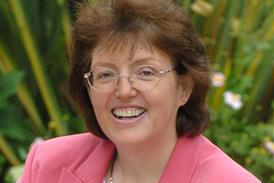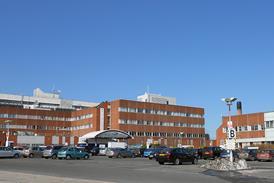Hospitals in five parts of England — in the south west and two more rural parts of the Midlands — have both low numbers of inpatients with coronavirus, and the largest amount of staffed beds available overall, according to figures seen by HSJ.
With the health and social care secretary emphasising the case for resuming normal non-coronavirus services on an area-by-area basis from this week, these areas could be seen as those with the most scope for doing so.
The health systems with both low covid-confirmed bed occupancy and low occupancy overall including non-covid patients are Derbyshire, Lincolnshire, Cornwall and the Isles of Scilly, Somerset, and Bristol, North Somerset and South Gloucestershire.
The detailed figures should be treated with caution. They are based on daily data for acute trusts from the beginning of this week, from documents shared with HSJ, but are not validated and are subject to fluctuation and variation in reporting. At the level of sustainability and transformation partnerships, however, they highlight areas more and less likely to be able to return non-covid services.
At the other end of the spectrum, the systems with both high covid occupancy and high occupancy overall are made up of some of those known to have been heavily hit by the virus: North Central, South East and North East London; Greater Manchester; Black Country and West Birmingham; and Milton Keynes, Bedfordshire and Luton. Still having larger shares of their beds and staff taken up with covid-confirmed patients — despite reductions since about mid-April — and with smaller numbers of total beds reported as unoccupied, these areas may be expected to be last to reintroduce normal care.
There are, however, several other important variables in that calculation — such as availability of staff, facilities and supplies, and what “cold” covid-free sites may be available. In some cases, specialist hospitals, NHS sites with no emergency department, or private sector facilities can play that role.
Senior sources in several of the areas with low covid-occupier rates, and low overall occupancy, also stressed the limitations on being able to get back towards normal.
One said that while occupancy appeared low in their area, the new requirement to test and isolate all new admissions would be difficult, and would take up substantial space and staffing — meaning it looked like there is “lots of spare capacity but [there is] not in reality”.
Another senior manager, in the South West, said acute trusts had space and would be keen to resume some elective work, but there would be limitations — crucially, the disputed factor of how much capacity has to be kept free for further covid spikes. ”The critical question is how much capacity do we need for covid? There is no mention of this in [NHS England’s letter], or the basis anyone should use for demand modelling.”
The occupancy data on a trust by trust basis should be read with particular caution, but again it gives an indication of where the impact of covid on capacity, and capacity overall, is lowest and highest.
Highest 10 confirmed covid occupied beds
| Name | Occupied with covid patients (%) | Unoccupied (%) |
|---|---|---|
| Whittington Hospital Trust | 31% | 19% |
| South Tees Hospitals Foundation Trust | 26% | 63% |
| Royal Free London Foundation Trust | 25% | 29% |
| Wrightington, Wigan And Leigh Foundation Trust | 25% | 33% |
| London North West University Healthcare Trust | 24% | 27% |
| Stockport Foundation Trust | 24% | 28% |
| King’s College Hospital Foundation Trust | 24% | 20% |
| Croydon Health Services Trust | 23% | 40% |
| North Cumbria Integrated Care Foundation Trust | 22% | 34% |
| Royal Berkshire Foundation Trust | 22% | 28% |
Lowest 10 confirmed covid occupied beds
| Name | Occupied with covid patients (%) | Unoccupied (%) |
|---|---|---|
| Dorset County Hospital Foundation Trust | 2% | 51% |
| Royal Cornwall Hospitals Trust | 3% | 50% |
| Torbay and South Devon Foundation Trust | 3% | 60% |
| Yeovil District Hospital Foundation Trust | 3% | 47% |
| Royal Devon And Exeter Foundation Trust | 4% | 52% |
| Somerset Foundation Trust | 4% | 52% |
| Northern Devon Healthcare Trust | 4% | 47% |
| Poole Hospital Foundation Trust | 4% | 45% |
| The Royal Bournemouth and Christchurch Hospitals Foundation Trust | 5% | 51% |
| United Lincolnshire Hospitals Trust | 5% | 53% |
Of the trusts with low covid-occupancy levels which HSJ contacted, most stated they were providing cancer and clinically urgent electives with plans to upscale other urgent care. Royal Devon and Exeter Foundation Trust said, subject to patient demand, training needs and available staff, it was seeking to scale up its urgent elective activity during this and next week.
Royal Cornwall Hospital said all appropriate outpatient activity had been moved to virtual platforms, which it planned to keep in place. All elective outpatient cancer care and inpatient haemotology and oncology care had been moved to an independent hospital. United Lincolnshire Hospitals said it continued to run outpatient appointments for cancer patients and was in the process of resuming other services in line with national guidance.
Whittington Health, which had the highest covid-confirmed occupancy according to the figures, said it was working with trusts across North Central London and would restart non-covid elective and urgent appointments when safe to do so. HSJ understands that, because the number of covid patients had reduced, the trust had closed some wards and therefore would normally have more beds open — potentially pushing down its percentage occupancy.
Source
Document seen by HSJ
Source Date
April 2020



























8 Readers' comments